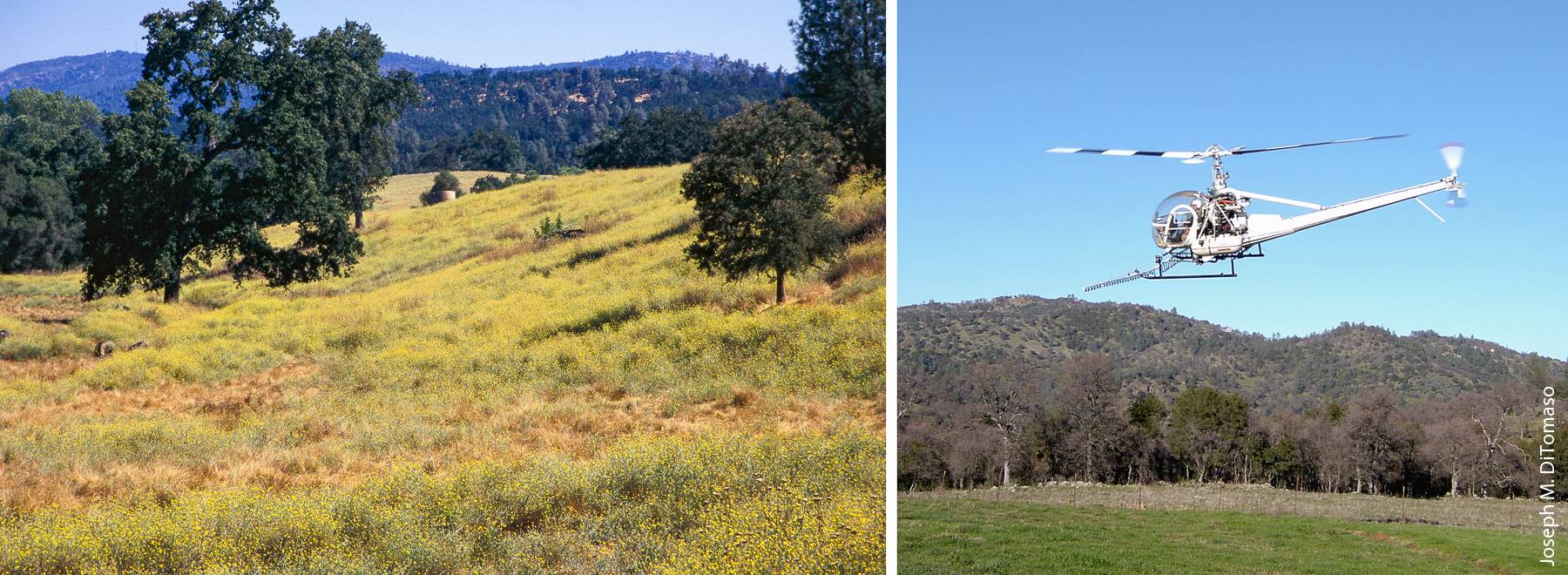All Issues
Sidebar: Importance of herbicide resistance in weeds of natural areas
Publication Information
California Agriculture 68(4):149-149. https://doi.org/10.3733/ca.v068n04p149
Published online October 01, 2014
NALT Keywords
Full text
Worldwide, the majority of the plant species that are developing herbicide resistance are those that occur as weeds in agricultural environments, on roadsides and in other rights-of-way. In contrast, herbicide resistance is not nearly so common in weeds of natural areas or rangelands. A search of the International Survey of Herbicide Resistant Weeds ( weedscience.com ) revealed no herbicide-resistant weeds (i.e., invasive nonnative species) listed for terrestrial natural areas anywhere in the world, and only two resistant weeds listed for aquatic areas, both of them in Florida. In pastures, 15 species worldwide have developed resistance, eight of which are considered primarily as agricultural weeds. Only two of those 15 are found in pastures within the United States, and none occurs in any Western state.
The reason more weeds develop herbicide resistance in agricultural and right-of-way systems has to do with factors associated with characteristics of specific weeds, herbicides and weed management practices. For example, high seed production increases the opportunity for genetic variation, and with it the probability that a resistance adaptation will occur. It so happens that all of the major weeds that have developed resistance to herbicides are annuals. In an agricultural system, annual species make up the vast majority of problematic weeds. Annuals can have high seed production, rapid turnover of the seedbank (due to a high percentage of seed germination each year) and, in some cases, several reproductive generations per growing season. This increases the selective pressure for herbicide-resistant biotypes. In natural areas of California, the California Invasive Plant Council (Cal-IPC) lists 214 flowering plants as invasive ( cal-ipc.org ). Of these, only 27.5% are annual species; the remainder (and the majority) are either woody species or herbaceous perennials or biennials. Perennial weeds, and particularly those with vegetative reproductive tissues, are less likely than annuals to evolve herbicide resistance.
The choice of herbicide can also increase or decrease the likelihood that weeds will develop herbicide resistance. In most natural areas, herbicides are not used as intensively as in croplands, where it is common to repeat herbicide applications within a single year or over several consecutive years. In addition, fewer herbicides are available for use in natural areas of California, and the most widely used compounds (e.g., 2,4-D, aminopyralid, dicamba, triclopyr or clopyralid) belong to the growth regulator chemical families. Resistance to these herbicides does not develop as commonly as resistance to other herbicide families, despite their having been available and extensively used for a long time. Glyphosate is also commonly used in natural areas, and although glyphosate resistance is on the rise in cropping systems, its development is often associated with repeated applications over multiple years, a strategy not generally used in natural areas.
Weed management practices are often the most important contributing factors leading to the selection of herbicide-resistant biotypes. In general, a land manager's complete and repeated reliance on a single herbicide or mode of action for weed control can greatly enhance the occurrence of herbicide-resistant weeds. This is particularly true when the manager uses no other weed control option, such as mechanical or cultural control practices. For a number of reasons, including economic feasibility and the potential for damage to desirable (nontarget) vegetation, it is uncommon for a land manager to reapply the same herbicide for several consecutive years in a natural area.
Yellow starthistle (Centaurea solstitialis) infestation, left; aerial spraying to control yellow starthistle near Sierra Foothill Research and Extension Center, right.
Because the evolution of herbicide resistance is typically the result of intensive, persistent selective pressure on a rapidly regenerating weed population (i.e., annual species), the incidence of herbicide-resistant species would be expected to be much higher in a cropping system with limited rotations or in other systems, such as rights-of-way, that are continuously managed with herbicides. In many natural areas, the effort to manage invasive plants can involve several different control strategies besides, or instead of, herbicide application. These can include mechanical means such as mowing, cultural methods including grazing management or prescribed burning and, when available, biological control agents. Furthermore, even when herbicides are used, they are rarely applied repeatedly over a long period of time. The total area of noncropped lands treated with herbicides is far smaller than the total acreage of agricultural land treated with herbicides. It is hardly surprising, then, that the incidence of herbicide resistance in natural areas and rangelands is low — in fact, it is not even reported at present in California.
Regardless of the vegetative environment, whether natural or agricultural, prevention of herbicide resistance and management of established resistant weed populations could be accomplished more effectively if we put a greater reliance on integrated weed management approaches. Although the likelihood that resistance will develop in natural areas is already low, management strategies that employ rotation of herbicides with different modes of action, the use of competitive species in restoration programs, and a combination of mechanical, biological and cultural control options in an integrated management program will further reduce the selective pressure on invasive plant populations and with it the potential that weeds will develop herbicide resistance.





